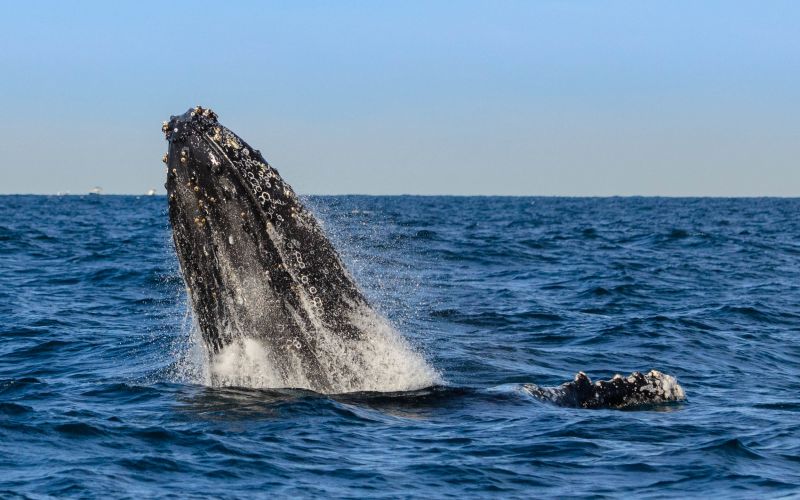Whale watching season with Oz Whale Watching has kicked off in Sydney with the northern migration well under way. There has been sightings everyday since we started our season on 18th May with a varying array of activity from the Humpback Whales. Double breaches and tail throws have been seen by juveniles, sub adults and mature adults, all within approximately 3 kilometres/ 2 miles of land.
The east coast off Sydney has become known as “the humpback highway” amongst the local operators and this year is shaping to be awesome as always. The migration of the southern hemisphere whale population is one of the great migrations of the world, with an expected 22,000 plus whales migrating past Sydney alone this year. Unbelievable conservation efforts from varying supporters and groups around the world have helped make this happen...Let's keep it going!
They will travel over 10,000kms in total and they do this to mate and give birth in the warmer waters of Northern Australia.
 Image Credit: Trevor Scouten
Image Credit: Trevor Scouten
The juveniles and younger whales will be the first to depart for the trip north followed by adult breeding animals whilst the pregnant mothers and last years mother and calfs will leave last as they need to stock up on the food as well as conserve for the return journey.
An interesting fact is that they will rarely eat along the whole journey. Prior to them leaving the icy waters of the Antarctic they will feed on enormous amounts of krill to build their energy supplies and blubber. They have been known to eat should it be an “opportune feed” where a school of small marine life may present itself and it may be too good to refuse for some, however, most tend just to keep migrating.
During the middle stage of the northern migration we get to see what is called a “competition pod”, when a group of males begin competing for a females attention. The males will form a pod of two or more and the action really starts! They will push each other, head slap another, all in an attempt to gain the attention of a female whale who is probably really only minding her own business, however, she is emitting hormones that the males can sense.
The competition pods can go on for varying amounts of time. This phenomenen is great to watch as the males spend a large amount of time competing on the surface using a lot of energy. This means they have to breathe more, providing plenty of spotting opportunities.
 Image Credit: Trevor Scouten
Image Credit: Trevor Scouten
Humpback Whales are the most common whale we see on the east coast getting up to a maximum 16 metres, however there are other species like Minke and Southern Right Whales. These two species can be a bit shy and harder to spot, however, on the right day can be great watching. Occasionally the mighty Blue whale has been spotted, measuring over 29 metres in length and weighing over 140,000kg....huge!! Experts have said that the main artery/veins of a blue whale are big enough for a small child to fit through!
Wherever you are in Australia, if you get a chance to see a whale, take in the moment and enjoy it..... Australia's wildlife is unique and awesome no matter where your travels and adventures take you.



Comments
Jonathan Campbell
3150 days ago
Hi Colin:
I was introduced to AWC by Craig Wickham at #ATE17 last week, and have since sent a copy of your Sydney blog to clients (Feldman party).
Post a comment